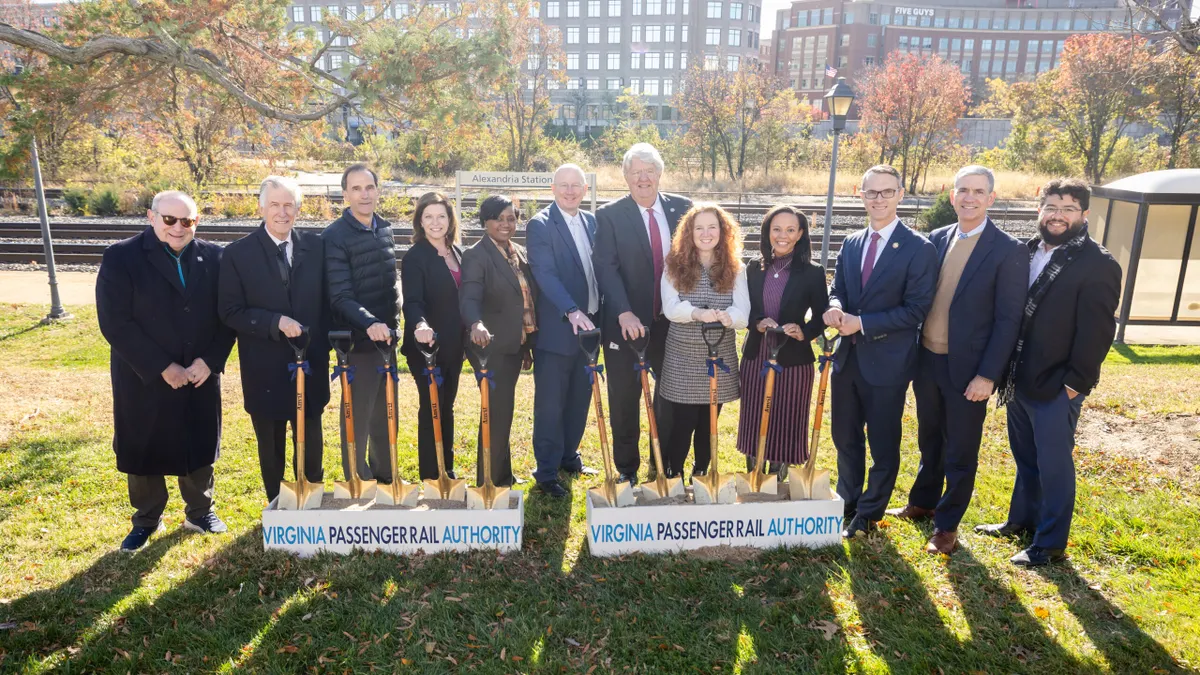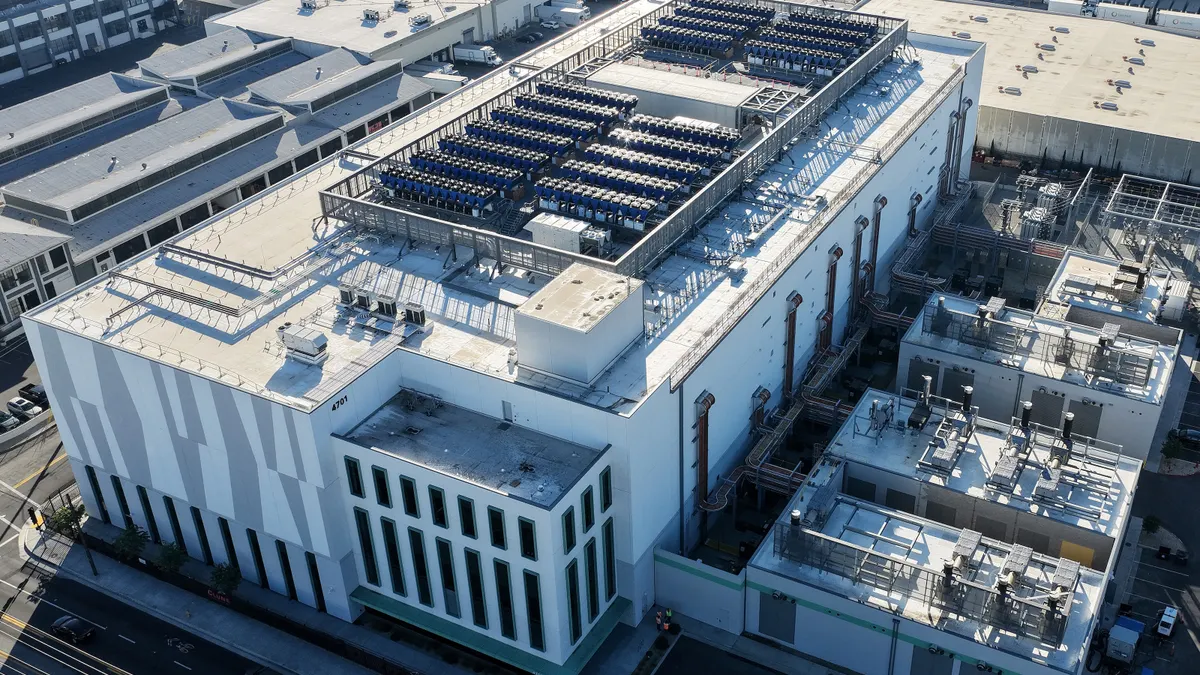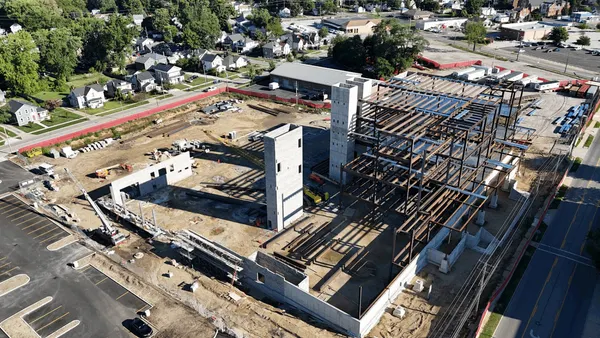Michael Peloso and Dan McCrave-Bessette are associate director and director, respectively, at the Construction Advisory Services practice of J.S. Held, a global consulting firm based in Jericho, New York. Opinions are the authors’ own.
The Federal Highway Administration has issued a final rule to implement the Build America, Buy America Act, which will impact transportation projects funded by federal dollars.
While the rule may be adjusted following a regulatory freeze period, the Trump administration has expressed that it may strengthen Buy America requirements.
This final rule, issued on Jan. 14 and in effect on March 17, rescinds the Manufactured Products General Waiver. Rescinding this waiver will require contractors to certify that manufactured products used on federally funded projects meet two main requirements: that final assembly of products occur in the U.S., and that manufactured products be comprised of a majority of domestic content by cost.

The new rule is part of the Build America, Buy America Act, enacted in 2021 as part of the Infrastructure Investment and Jobs Act, and aims to align with federal goals of strengthening domestic supply chains and reducing reliance on foreign materials. To comply with the Buy America requirements, products must satisfy the following criteria:
- For projects obligated on or after October 1, 2025 – Final assembly of products must occur in the United States.
- For projects obligated on or after October 1, 2026 – Products must contain at least 55% domestic content by cost.
While these changes intend to prioritize domestic manufacturing, there may be implications for project cost, schedule and compliance. Here’s what construction professionals need to understand about the rule, its requirements and the potential impacts.
Potential impacts of the rescinded waiver
The length of the design and construction lifecycle for projects tends to be longer in duration and typically spans different political environments. Because of this, the magnitude and timing of these changes can have various impacts, specifically if later in the project lifecycle.
In some cases, this will lead to costly disputes from unapproved change orders, mediation, arbitration or lengthy litigation. The rescinding of the Manufactured Products General Waiver will likely have implications to the cost, schedule and quality of federally funded projects.
Cost: The change in the requirements could impact project budgets due to increases in both procurement and compliance costs. This may lead to lower margins, change orders and disputes from subcontractors, the ability to bond additional projects and financial statement pressures.
As contractors and suppliers are compelled to utilize domestic sources for manufactured products the availability of materials, at least in the short term, is likely to be limited, leading to increased demand and rising prices. The additional requirements will also result in the need for greater resources to ensure compliance with the Buy America requirements over a broader range of products than has been needed historically.
Contractors and suppliers should consider the budget implications of these additional resources during the planning stage of the project in order to avoid later cost overruns.
Schedule: The changes to the waiver and new requirements may also impact the entire product procurement cycle, including buyout, engineering, fabrication and delivery.

With the potential for more restrictions on product availability, the supply chain will likely entail longer-than-normal efforts to identify suitable domestic suppliers in place of foreign firms. Additional time must be allotted to vet these companies to ensure compliance with Buy America requirements and technical specifications.
Contractors should prepare up front in the planning phases with additional risk management planning and contingencies for extended procurement times or supply chain issues compared to existing product sources. A cost-benefit analysis should be considered when deciding to make a waiver request, as processing times and approvals are not guaranteed.
Some states, such as Rhode Island, have already updated specifications to include language that any delays caused by the waiver process will be the sole responsibility of the contractor. Besides costs, contractors and suppliers would be wise to evaluate these additional time considerations associated with these processes during the development of early schedules – including pre-bid and project baselines.
Quality: Lastly, in addition to cost and schedule concerns, contractors and suppliers must remain vigilant in ensuring product compliance with technical requirements as new vendors and new products enter the marketplace, or substandard options become available.
Contractors will want to increase quality assurance and control efforts to ensure that proper due diligence of products continues to meet the quality standards required by the contract, specifications and industry standards.
As with cost and schedule, it would be prudent of contractors and suppliers to evaluate what additions or changes need to be made to their quality management programs to ensure that the products coming from domestic sources comply with contract requirements. Adherence to quality is not only a requirement in contracts and industry, but failures that occur because of quality issues can lead to reputational or potentially criminal issues.
Risk mitigation at each project stage
It is important to consider what steps contractors and suppliers can take and when, to remain in compliance with these requirements. Specifically, it is worthwhile to consider the pre-bid stage and the active project stage, as well as how to approach change management.
Pre-bid stage: Contractors and suppliers should begin with a review of their existing supply chains. This review should focus on identifying potential challenges in complying with the requirements.
Based on this evaluation, contractors and suppliers should engage as early as possible with the appropriate stakeholders to determine what steps should be taken to remain compliant. In support of this process, it may be worthwhile to perform an analysis of alternative suppliers.
Finally, contractors and suppliers should ensure that they clearly communicate the changes in procurement requirements through their contracts and pre-bid conferences.
Active construction stage: Communication between contractors and their suppliers will be key to ensuring compliance during the active construction stage of projects. Contractors and suppliers should be diligent in sharing information regarding costs and schedule as work progresses across the engineering, procurement and construction phases.
In support of this communication, contractors and suppliers would be well-served to establish or reinforce existing tracking systems for material, and implement onsite inspections to confirm compliance.
Change management: In the event that changes are required to maintain compliance, it is essential that a protocol be established to identify, evaluate and approve material substitutions. It is in the best interest of all stakeholders to be disciplined in maintaining documentation related to all certifications, waivers and contract modifications.
Looking ahead
The FHWA’s expansion of Buy America requirements reflects a broader commitment by the federal government to strengthening domestic manufacturing and supply chains. However, it
also demands significant adjustments from project stakeholders as they consider the cost, time and quality of projects in which they choose to engage.
The rescinding of the Manufactured Products General Waiver will likely have consequences that contractors and suppliers should begin planning for as early as possible. While the rule remains in a regulatory freeze, contractors and suppliers would do well to consider the implications on future projects.
This includes additional focus on early and continual risk management to identify the cost, schedule and quality impacts, and working with suppliers to understand the constraints on the supply chain. This will be critical in understanding and mitigating those impacts
Dan McCrave-Bessette also contributed to this article.






















